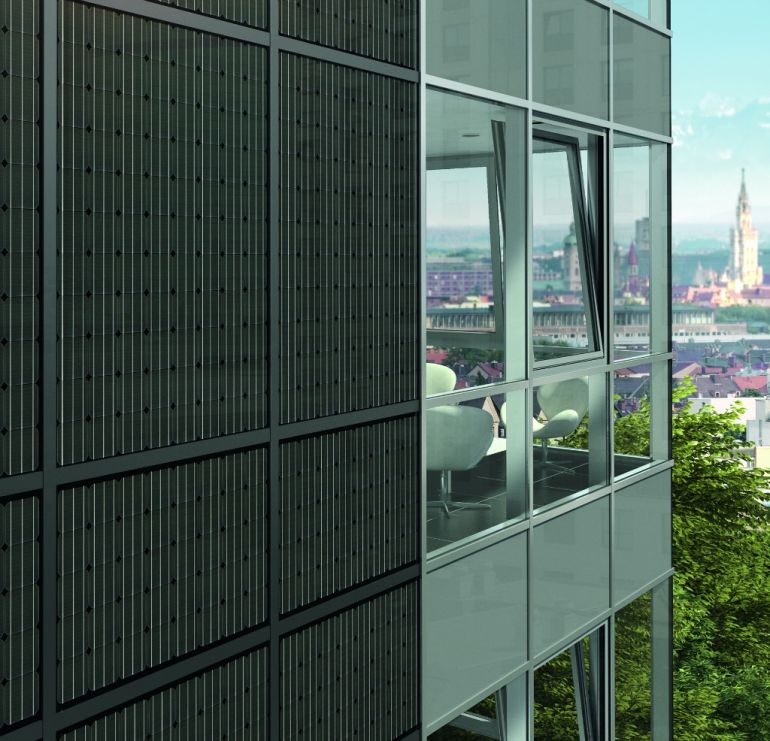We do not treat the investment in green energy as an imposed obligation any more, but as a peculiar sign of our times. Certainly, statutory regulations which are often supported by rigorous European Union requirements also “motivate” to it. According to them, the contribution of energy from renewable sources is supposed to increase to the level of 15 per cent till 2020. Works on the OZE act are being continued. It will allow to support the producers of renewable energy and impose on lowering of restrictions, for instance, concessive duty. The act puts a great emphasis on the development of photovoltaics installations, that is systems enabling the production of electricity by using solar radiation power.
What is it?
How does the structure generate power? Photovoltaics links which are placed in panels are responsible for it. Under the influence of solar energy and thanks to so-called photovoltaics effect, a direct current is produced in it, which is then transformed by the inverter into an alternating current with parameters enabling the usage in the building. Photovoltaics installations are often designed as systems attached to a facade’s surface (BAPV – Building Attached Photovoltaics) or integrated with a structure (BIPV – Building Integrated Photovoltaics). Hence, BIPV systems offer “two in one” – the realization of an aesthetic and solid building’s covering, performing a function of a renewable electricity generator at the same time. Photovoltaics modules may be used in the whole covering of the building. Apart from supplying energy, they are often used as shading, transparent or non-transparent or decorative elements in: facades, skylights, light breakers, doors and window elements – says D.E. Andrzej Polijaniuk, director for marketing and Schüco International Poland product. Moreover, thanks to their originality, they may be used in the whole covering of the building, thereby replacing traditional fillings, even those with the best parameters.
Depending on the demand for building’s energy as well as its aesthetics, we may choose monocrystalline or polycrystalline links, plotting on individually designed window formats. Thereby, the whole coverings of office structures are created with photovoltaics modules adjusted to the building’s needs, for instance, to façade and skylight constructions – transparent, that is enabling the interfusion of visible light, or non-transparent – of which the main function is to generate power. Furthermore, joint photovoltaics panels perform additional same function as double glazing – explains Andrzej Polijaniuk. They protect the structure from heat loss providing, just like windows, the increase of heat and acoustic insulation, generating electricity at the same time.
Instead of traditional façade
A fast development of BIPV is determined by i.a. economic calculation. The price of a high quality module is comparable with most of finishing materials – says Małgorzata Bartkowski of REECO Poland company, which is the organizer of the International Trade Fair and Conferences for Renewable Energy and Energy Efficiency RENEXPO® Poland. BIPV panels fully replace traditionally used outside building materials – they are successfully used in the building of a structure’s facades. This kind of solution is primarily supported by economical aspect, because there is no need of making the building’s construction and later the installation of photovoltaics panels. Moreover, the designing of energy generating system on the stage of a building’s planning allows to achieve possibly high parameters.
The proper project has a crucial meaning for the future system. The architect has to take many factors into consideration, i.a.: the impact of a place and angle of the installation on an amount of energetic profits. Defining of the level of a demand satisfaction on electricity through photovoltaics panels depends on the size of a building, its energetic class and total demand of a structure for electricity – explains Andrzej Polijaniuk from Schüco. It is assumed that photovoltaics modules installed in a façade have a gain of ca. 30-35 per cent smaller than the same modules installed in a roof or roof overlap at an angle of 30°. For instance, 1kW of modules installed in southern façade will produce 620-665 kWh/year, which makes a very good result anyway.
Additional advantages
The usage of photovoltaics panels is not only supported by soaring prices of electricity or greater emphasis on the fact that the building would be energetically self-sufficient or at least energy-saving. Photovoltaics modules may take any shape and color, which makes them very attractive for architects. Furthermore, such results increase the prestige of an office investment as well as market value of a property – prompted Małgorzata Bartkowski. Buildings using renewable sources of energy, in turn, show a tendency to enlist tenants and obtain higher prices of office buildings lease and sale more easily. Moreover, photovoltaics systems integrated with a building’s architecture increase its energetic effectiveness thus helping in gaining more points in certification systems with lots of criteria, serving in an objective assessment of eco- and user friendly buildings. “Energy” is a criterion, for which the highest number of points in a British BREEAM system may be gained. It enables an office, commercial and industrial structures’ certification – he continues.
To sum up, in the case of office buildings, the choice between photovoltaics integrated and independent systems is comparatively easy, if we face this problem before the beginning of a realization. Thanks to BIPV, investment’s costs will not increase too much in comparison to a standard façade. Instead, they will compete with the costs of a structure building and additionally with panels’ installation. There is no need of convincing anyone about the correctness of a system’s usage enabling the electricity production from a solar radiation. However, it is worth to believe the analytics of the energetic market who jointly convince – photovoltaics is the future of the market.



